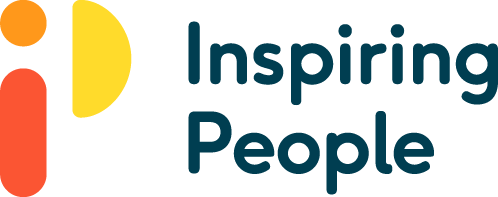Employee Motivation 101: Why Happiness Matters
For those of you that know me a little better, you may be aware that earlier this year I appeared as a contestant on BBC1’s MasterChef programme. My moment in the spotlight was, regrettably, short lived but great fun all the same.
My reason for mentioning this experience is not a bit of shameless self-promotion - anyone who witnessed my blind attempt at a Pigeon Wellington should attest to the fact that re-exposure to the results could not in anyway benefit me!
Rather, I was recently self-reflecting on some questions posed to me by Greg Wallace on what I did for a living and what motivated me to cook. I shared with him that I was an HR Consultant and, off the top of my head, I responded that I loved cooking as it allowed me to express a creative side to my personality that I felt was limited elsewhere.
During this self-reflection I began to explore that idea that I simply love to cook because I get a chance to express my creative side. As I thought more deeply about this I recognized that my creativity isn’t just limited to my cooking. It also happens to be expressed in the many other areas of interest that I have. It turns up in my HR work, it’s in my interactions with my kids, in my allotmenting even, and so on. In fact, it seems to be a part of everything that I am about.
So what was the answer to Greg’s question? Why did I love cooking so much?
The answer was much more simple than I had presumed. I just enjoy putting a smile on people’s faces. I like to make people happy.
But why? Why would I be motivated to do that? Am I unusual in this respect?
Experience of family, friends, acquaintances and business associates tells me that I am not unusual (certainly in this way, anyhow!) Lots of people, all around the world, it seems are stimulated by making people happy and being made happy.
To avoid getting into the realms of pub philosophy I undertook a little research to find out what some more established authorities might be saying on this subject. Those authorities, such as the eminent psychologist Martin Seligman, author of a whole range of books including Authentic Happiness, also seem to concur that the state of happiness is critically important to us all. It seems happiness is a critical component of how human beings interact with each other – how we build intricate, complex, large and productive societies.
In other words happiness motivates us – we are motivated when we are happy and when we are making people happy.
Happiness vs Carrots vs Sticks
So why am I telling you something you probably already knew? Because, while you know this truth in your heart of hearts, while you more than likely apply it in your personal life, if you manage a team or run a business, not many of you are leveraging this simple truth to great effect in your working environments.
When we think about our priorities in managing a team, yes, team dynamics are an important consideration but that’s probably about as far as many of us get in prioritizing happiness in the workplace.
If people like to make people happy and like to be made happy themselves then why are we not taking advantage of this primitive instinct to make our workplaces more effective, productive, innovative and profitable places.
Imagine the benefits of a happy workforce: your people feel good, they’re vibrant, they are motivated to please in return not just pleasing you as their leader but also your customers (wow!), their minds are freer to create great new ideas that help your organization deliver new levels of excellence, find new markets and so on and so on.
And then think of the other side of the coin – a place where we simply rely on the carrot & stick techniques for motivating our people – the reality of most workplaces, still, today. No matter how grand the carrot or how painful the stick might be, these incentives alone, without having a fun and happy place to come to every day, are rarely going to be sufficiently interesting to your people to maintain a level of commitment to your businesses goals, customers, etc. Your people might still come to work but whether they’re really there is another question altogether!
In other words, unhappy workplaces are just not sustainable.
Tennis Balls
So what can you do to make your people happier?
A great starting point is showing that you care about your people’s happiness and the best way to show you care is to take an interest in them and their opinions. Ask them how happy they are and where they think the opportunities for improvement are.
You don’t have to make an industry out of this either. Nixon McInnes, a progressive Brighton-based, internationally reaching Social Media Agency have a very simple idea for checking in on workforce happiness on a weekly basis. At the end of every day all employees are encouraged to drop a tennis ball into one of two buckets – one with a smiley face on it and, surprise, surprise, the other with a sad face on it.
It’s then someone’s very small job to count the tennis balls and write the number up on the wall for everyone to see. If there are big concerns reported then the MD takes a closer look to get to the bottom of it. It’s that simple.
Nixon McInnes took this a little further and correlated the happy data with company performance – the findings made very interesting reading. If you’re interested in these results then click here – http://bit.ly/cltrshk7
Do remember just one thing though if you plan to measure your employees’ happiness. Don’t do it if you don’t intend to act on the data or if you are likely to regularly run out of time to do anything with the measurement. The one thing worse than not taking an interest in your people’s happiness is really making the point that it doesn’t matter to you at all by asking your people’s opinions and then completely ignoring them!
The Path to Enlightenment?
Understanding how happy your people are is just the beginning.
There are all sorts of things you can do to help your people get happier at work. What individuals do for your organization on a day-to-day basis is right at the heart of their personal happiness. As Dan Pink makes clear in his TED talks and his book Drive: autonomy, mastery and purpose are all critical requirements for people to feel fulfilled in their working lives. And don’t forget relationships – forging great working relationships not only makes the workplace somewhere you really want to come into on a daily basis it is also the oil that makes your business machine run smoothly as we are dependent on each other for the delivery of our customers needs.
Forging great working relationships can be as easy as saying a bright and breezy hello to people when they come into work first thing in the morning or providing spaces where people can get to know each other better like rest spaces or even, at a push, water coolers!
Brighter working environments also make a big difference.
Back up these practices with a set of values that everyone lives by and you’re well on the way to a happier, more energetic and productive working environment.
Great HR, Great People, Great Organisations
Which, finally, brings me neatly back to me. Working in HR can be a gritty and dark place sometimes. Very often we are called upon to arbitrate, resolve or generally deal with all sorts of disputes or workplace problems. It goes with the territory but it can be quite depressing. But this isn’t all what HR is about. In fact, it’s just the tip of the iceberg.
HR is great when the knowledge we have of how best we can organise ourselves at work is applied to help employers get the most out of their people. It’s about making work better – making it happier for employees and making it more effective, efficient and profitable for employers. When HR truly delivers then everybody benefits.
Further Reading
If you are interested in a bit more reading to deepen your understanding of the opportunities in front of you then the following books come highly recommended:
Delivering Happiness by Tony Hsieh
Drive by Dan Pink
Culture Shock by Brighton’s own Will McInnes



